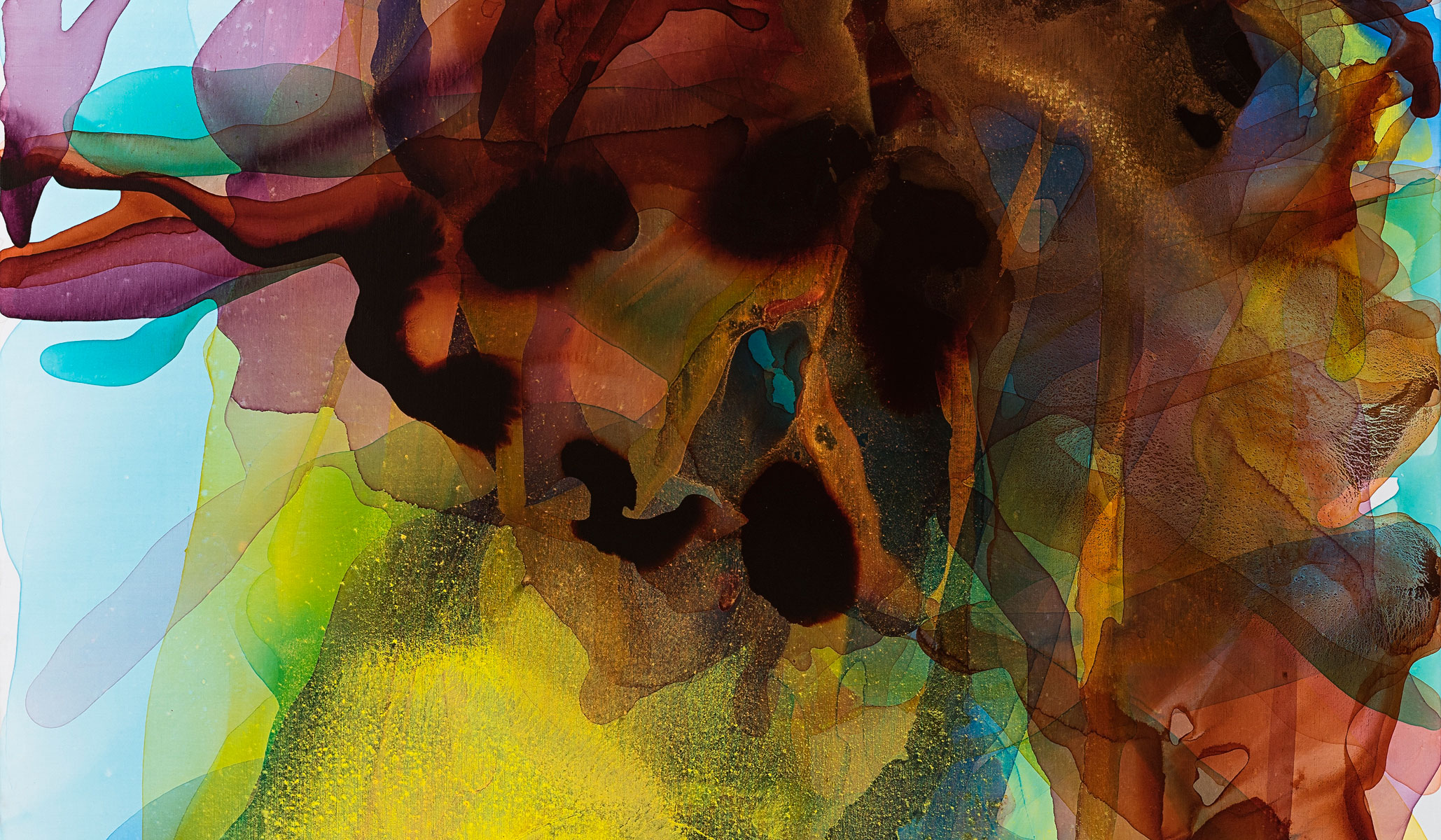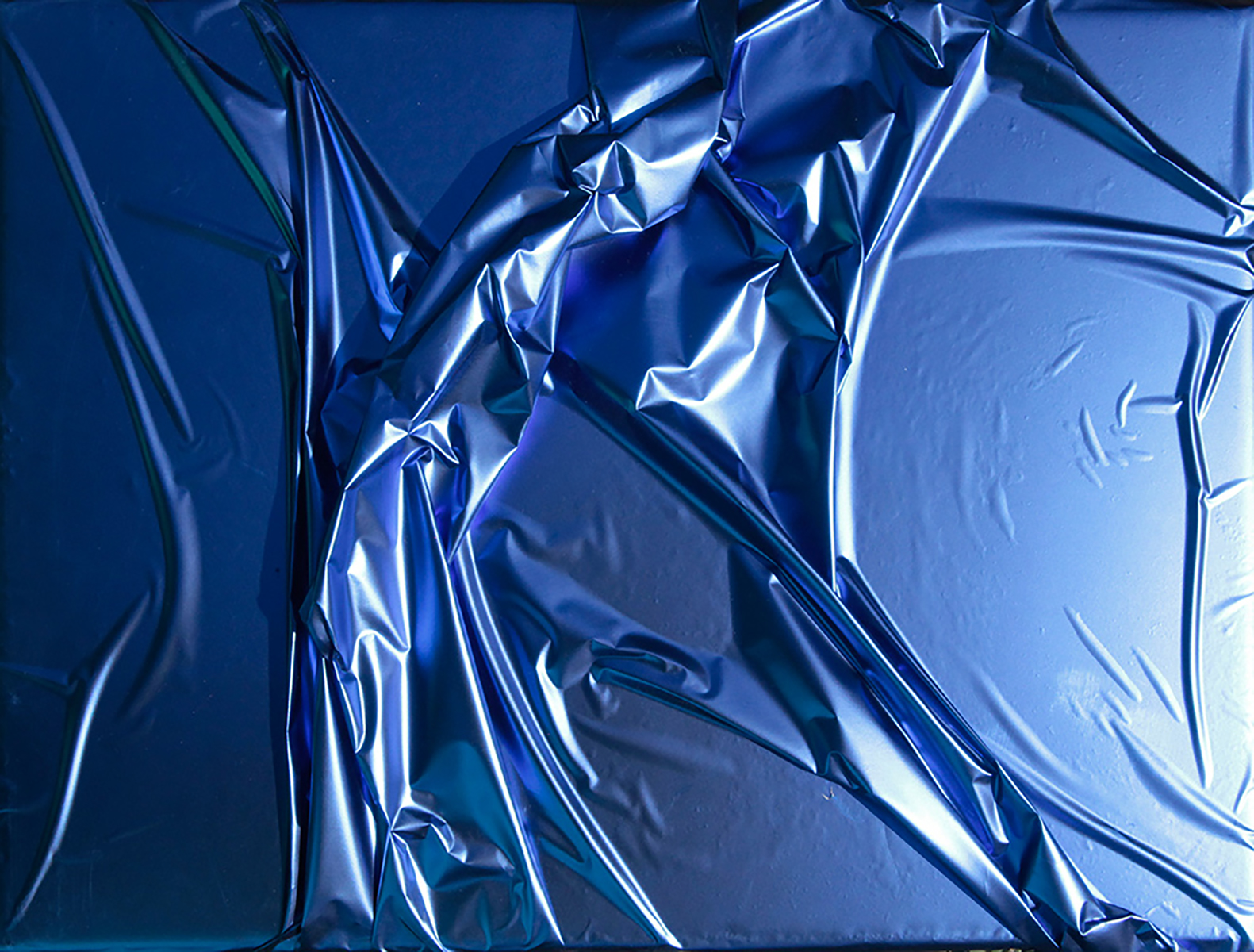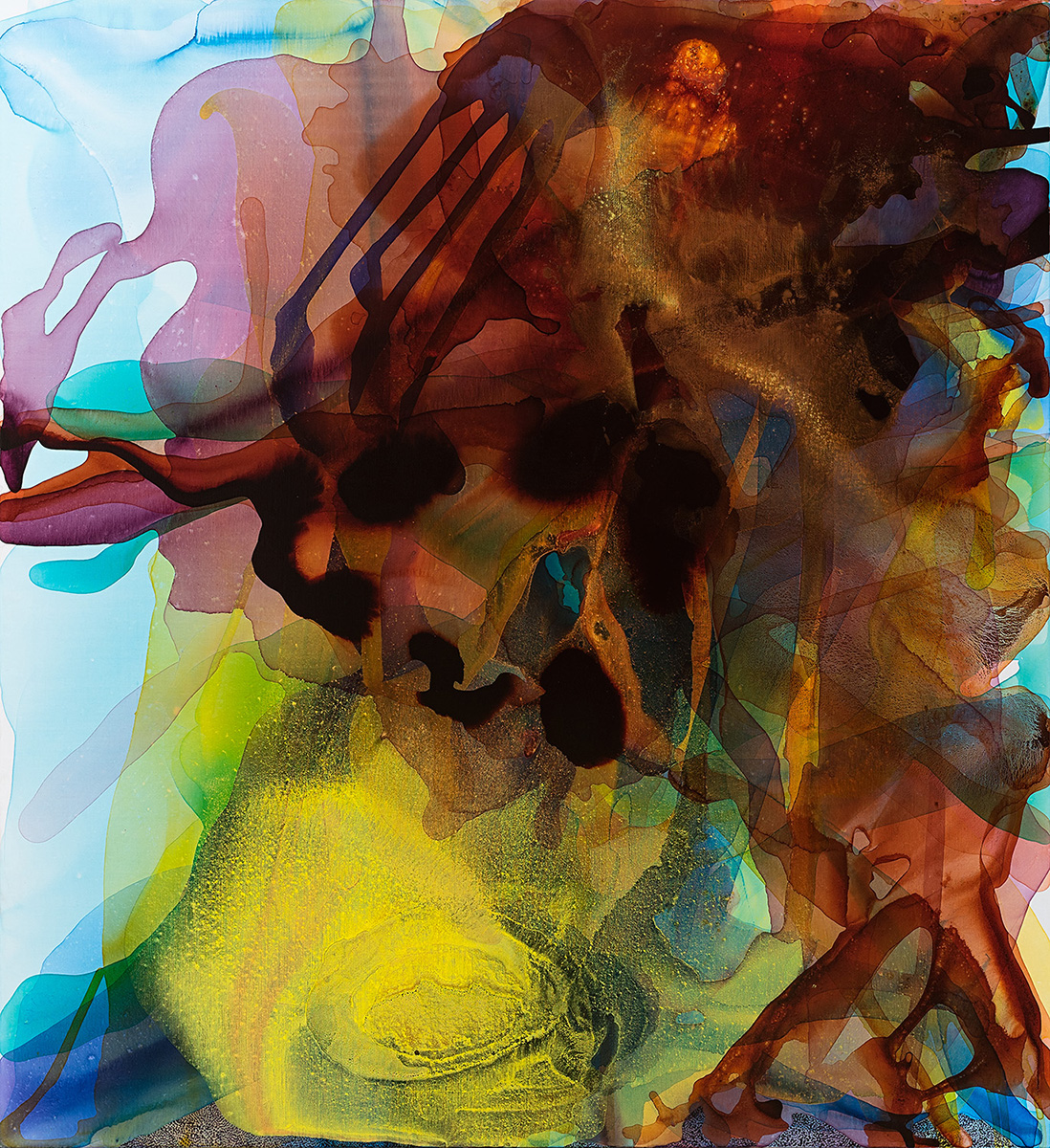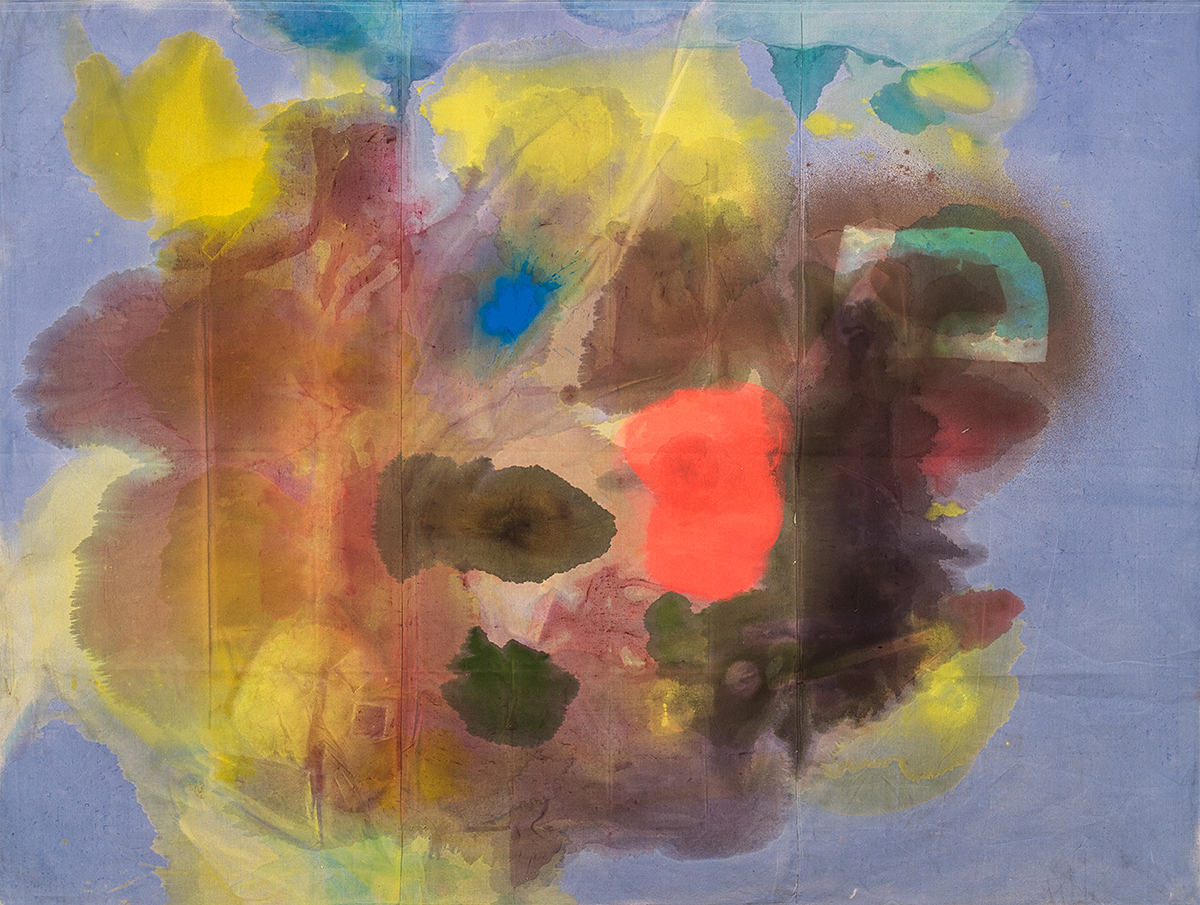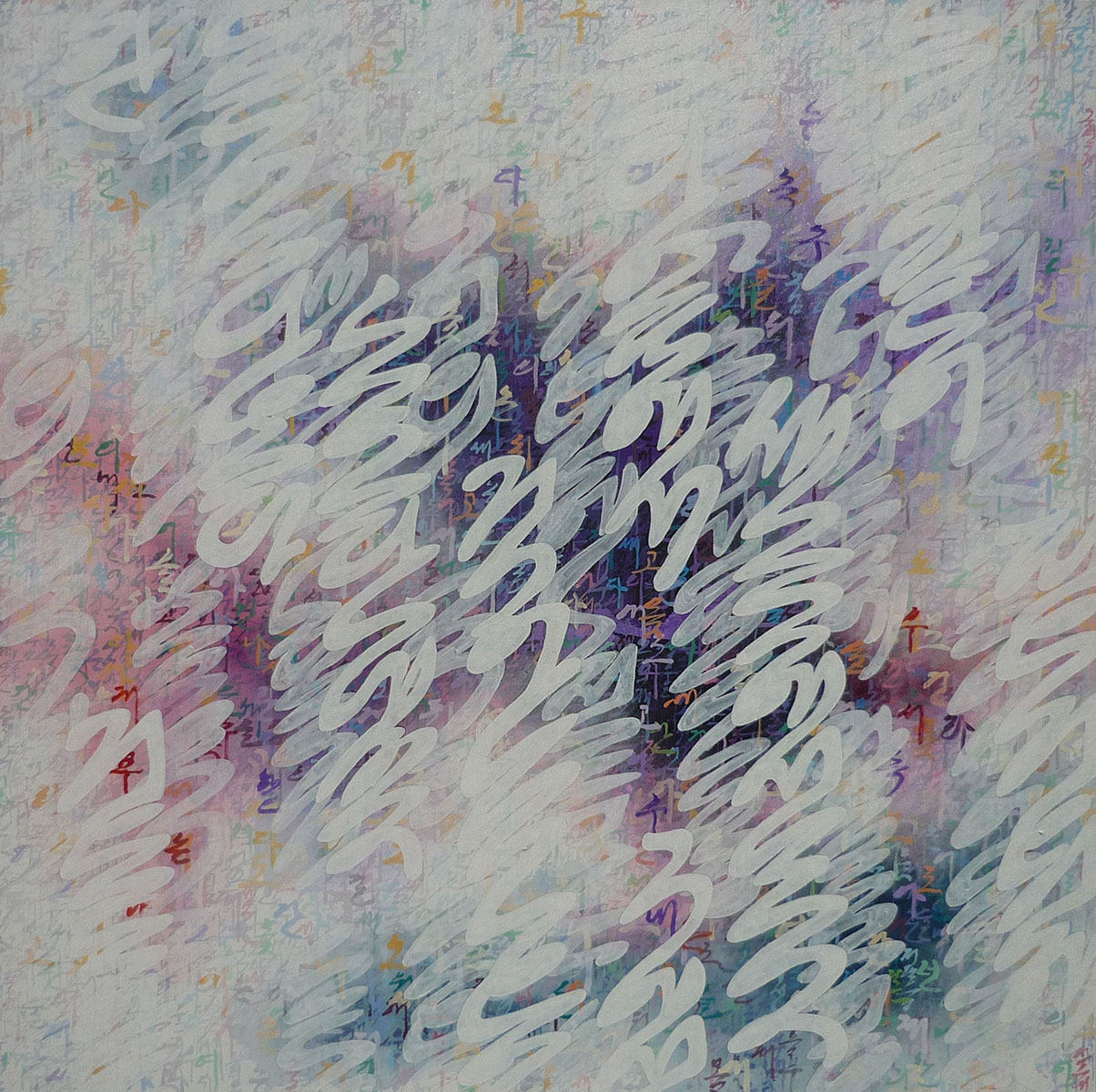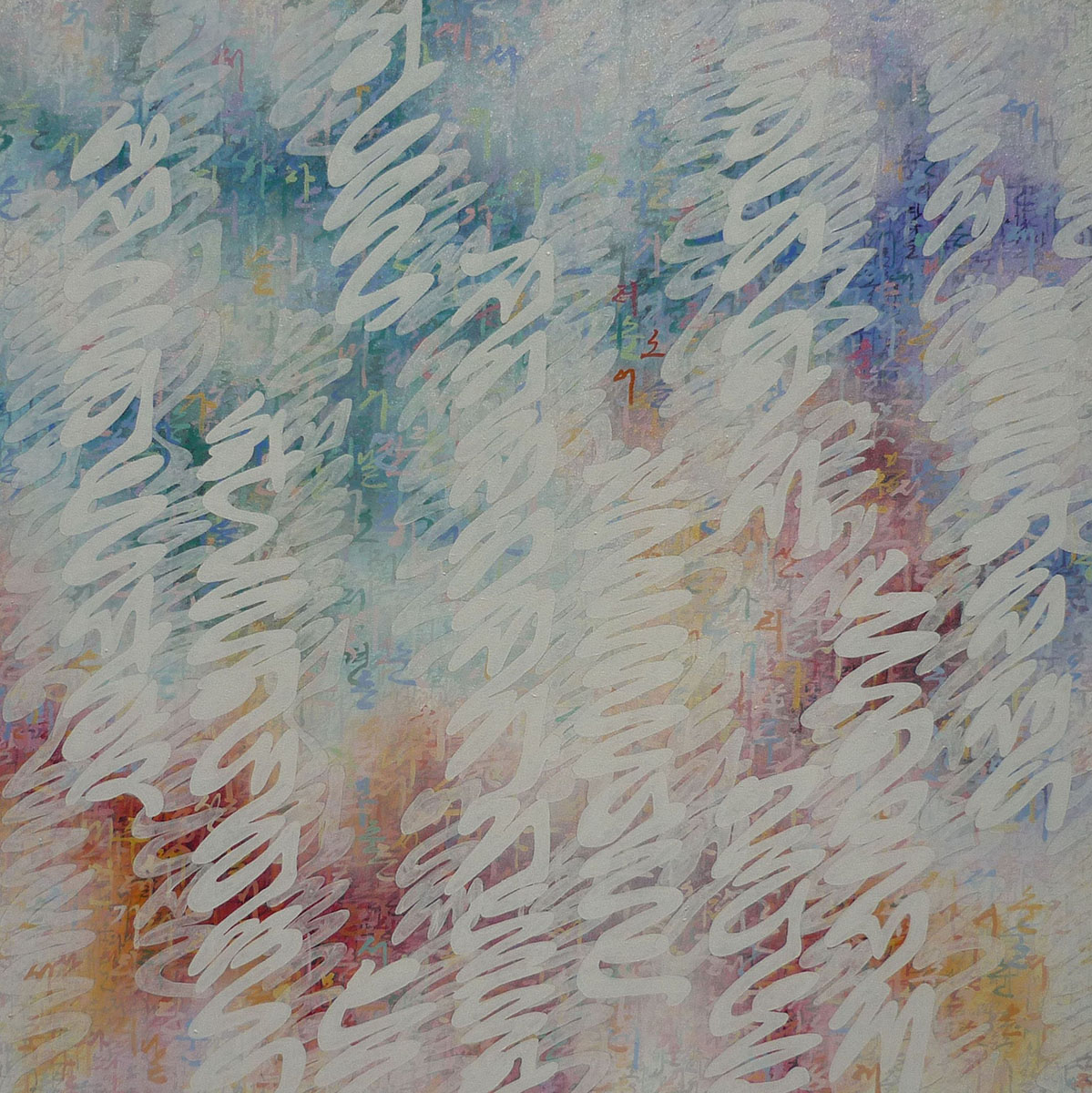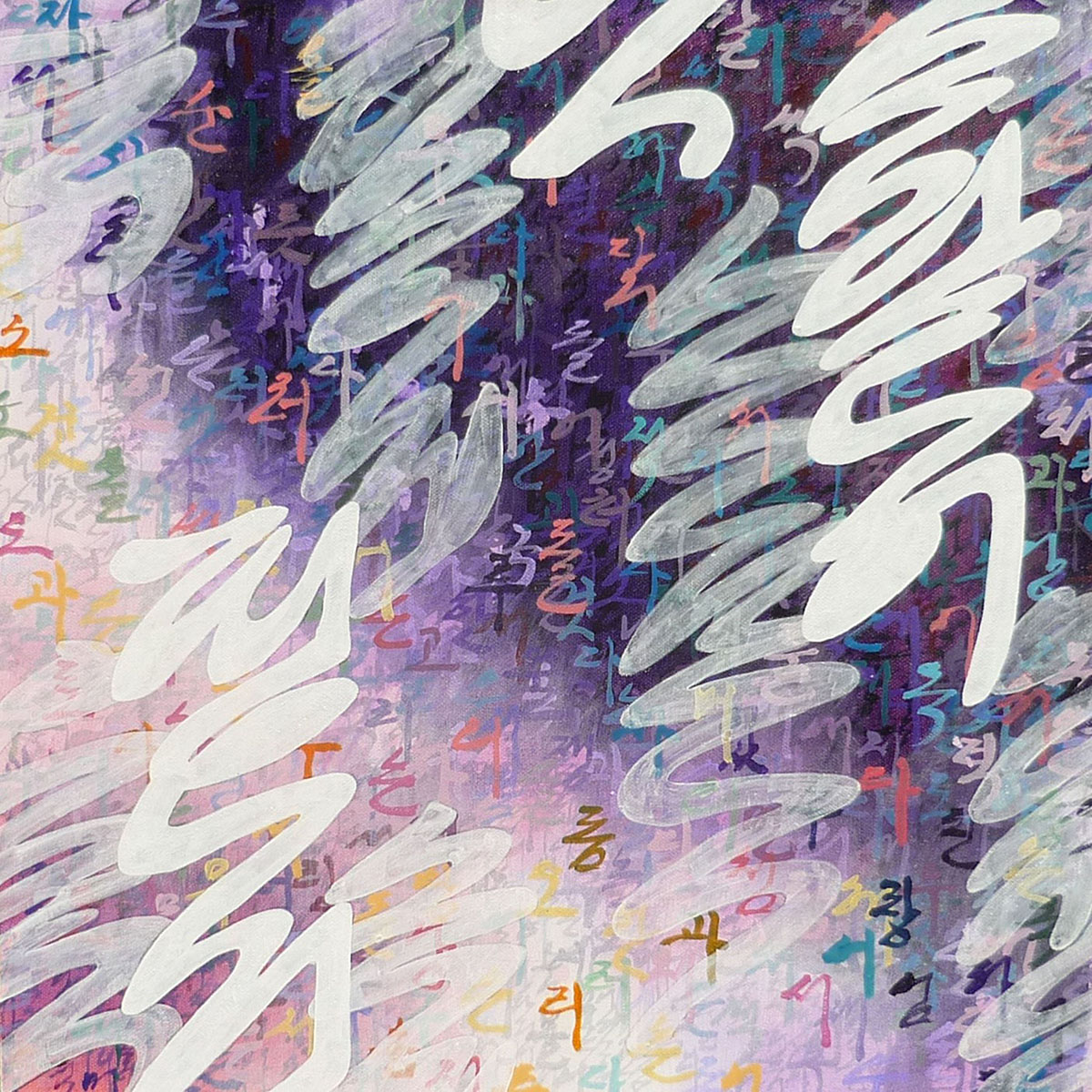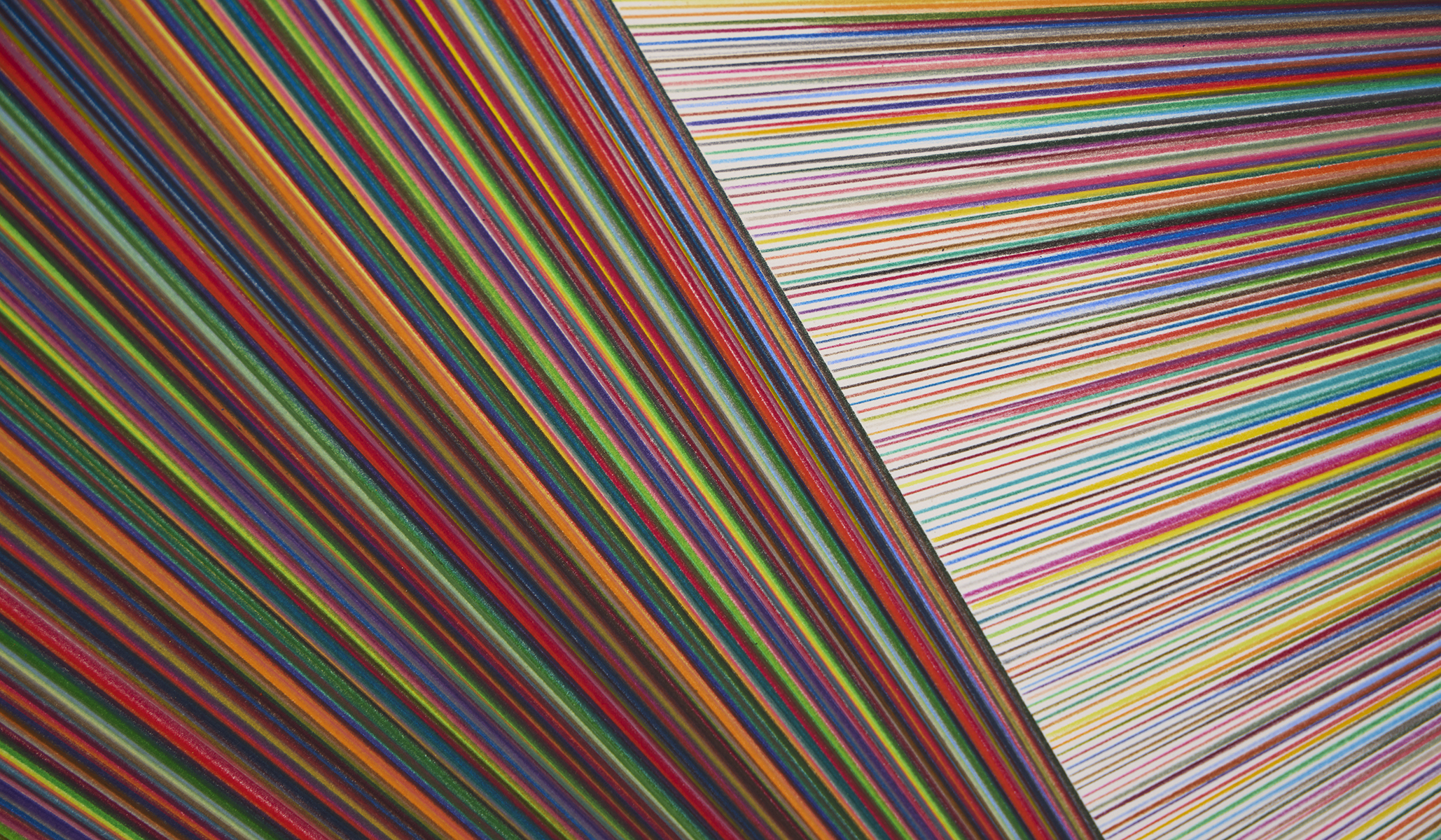Exhibition
PAINT16 is a lyrical cacophony of colour, falling, flowing, folding, off the wall, over the wall, on to the floor. Painting as a wall-based flat plane is both acknowledged and challenged by the artists of PAINT16, Lara Merrett, Hyun-Hee Lee and Mark Titmarsh, for their contemporary ‘beyond painting’ approaches to making art.
Mark Titmarsh’s muse is Colour – her potential, performance and technologies. He describes a “paradoxical search for new ways to not-paint… Painting, rather than being made of paint now becomes the way of coloured things…” – citing primitive natural earth pigments and synthetic paint concoctions as now largely electronic and pixel-based amid the pervasive high-key luminescence of the digital monitor that has become the contemporary visual vernacular and a challenge to painting’s relevance.
In this context, his New Earth (magenta) flares with a flouro intensity of colour; the artist mixing the colour at a graphics studio and printing the magenta by ink-jet printer onto silver metallic vinyl – ultimately folding, forming, contouring the intense saturated field of colour onto and around an aluminium-composite panel; while Specific Painting 3, a lithe slump of see-through iridescent orange Perspex is nonchalantly indifferent to siting on wall, ceiling or floor.
Lara Merrett too assumes a beyond-boarders approach to painting. She conjures with the materials, the ‘stuff’ of painting: the mixing pots, the canvas, the colour, and with the performance, the place and put, the drama and choreography of making.
Accretions of ink, paint, water, ending, starting, oozing, staining, tracing the overspill from the studio, mark the ‘Tarpaulin Paintings’ of Lara Merrett. The un-stretched works, their life begun on the floor as a drop sheet, mapping the history, absorbing the passage and happenstance of their making and now tacked to the wall are simultaneously paintings of, from and beyond the studio.
As are the artist’s recent large-scale installations; a type of “whole of” painting: holistic, embracing, intuitive, instinctive environments of high-density super-saturated colour. Absorbing a sense of the heat and teeming colour of India and Spain where over time Lara has lived, travelled and studied. Climbing walls, flopping; folding informal cushions of colour, spreading, denying structure; in flux.
The artist envisages them as part of one romantic mega painting or performance – where possibilities and scale are endless. A huge collage and kaleidoscope… But still speaking back to paintings, naturally referential to her flat wall-based paintings where the ongoing organic dynamism, free association and dissolution of the edges are reflected.
Sites where the language of colour and collage finds poetic introspection and outlet for the artist-dreamer seduced by colour; capturing mood. Fluidity, viscosity, the plink, plonk, splatter and splash of droplets, skittering like birds across water along with paler quiet passages of stain, drip and bleed and opaque overlays – waves of staining – capturing moods, floating time and space onto the canvas.
The rhythms and sentiment of poets and their languages are similarly reflected in the colour and gesture of Hyun-Hee-Lee’s visual vocabulary. The alignment of traditional Korean screen painting and Western contemporary art practices that are characteristic of her work give new life to both and maintain the spiritual and emotional connection with her past and culture.
Although the arrival works are seemingly conventional flat painting in format, they are the culmination of many pathways via her personal writings where she revisits her memories and diaries and her spiritual and cultural rituals that are realized through many modes and stages of making including collage, stitching, cutting and large scale whole-of-room installations.
Her paintings Autumn Story, Winter Garden, Morning Frost and Winter Night, linking past, present and Buddhist philosophies are responses to concepts of traditional Korean poetry from the time between 2nd World War (1939-45) and Korean War (1950-53), in particular the introspective poems of Yun Dong-Ju and his very moving sentiments of alienation and distance. She responds through the eyes of a contemporary painter expressing her much later but personal experience of displacement and separation from her home culture and family. Her paintings are ‘seasons of the mind’ that share with the poems an underlying melancholia, but the implication that Winter and hibernation will pass and presage new life and hope with Spring.
Lee’s paintings devolve from her earlier hanging sculpture, White tears, a large-scale white cut-paper cascade of prayers, a mother’s lamentation and homage to a time of separation from her daughter in Korea. She finds affinity and is deeply moved by Yun’s Counting the stars at night in whose poetry tears too flow – extolling the night sky glimpsed from his prison cell in Fukuoka Prison where he was tortured, starved and died during sentence for two years for engaging in anti-Japanese activities with other Korean students living in Japan. He is naming the stars: one star for memories, one star for loving, one star for poetry… one star for my mother; the brilliant stars a symbol of hope.
Lee’s under-painting expressed through intensities of colour and gesture in her distinctive but not legible form of calligraphic mark making relates to her own story from personal writings. Her emotional response to the words of the poets is written onto sheets of Hanji paper. These she cuts into a form of paper ‘stencil’ and gathers into individual ‘poem folios’ which she selects and layers onto the under-painting and draws around in pencil to form the white painted veil of emotion. The density of opacity or transparency of these painted ‘tears’ relate to the emotion and ideas contained in the poems.
In the aftermath of the long ago mooting of the death of painting in 1839 by French painter Paul Delaroche – and taken up sporadically since, the approach of artists continues to evolve, to mine and exploit the power of painting and its technologies and the magnitude of its beyond the wall reach and possibilities…
Barbara Dowse
Curator

